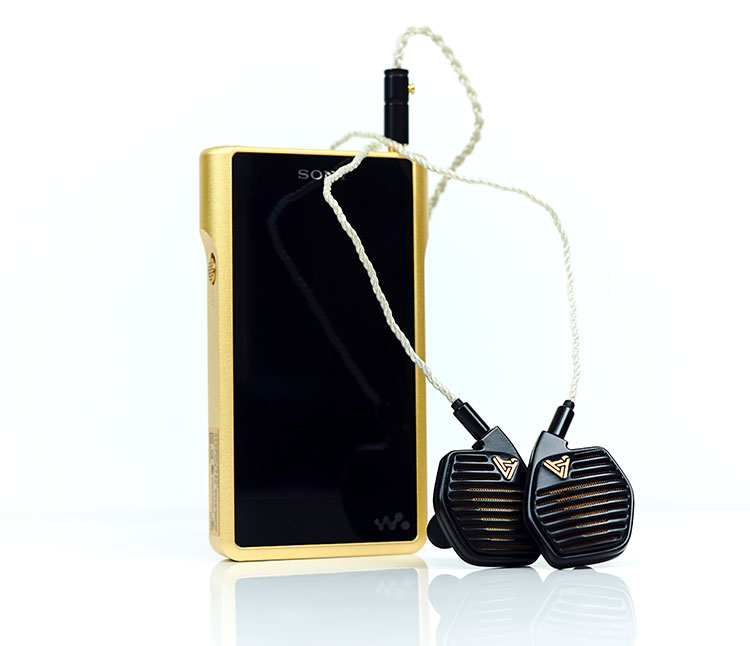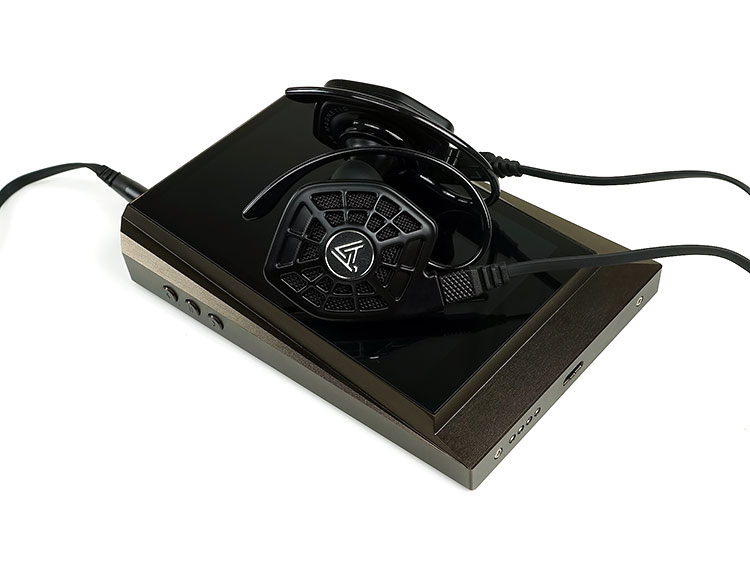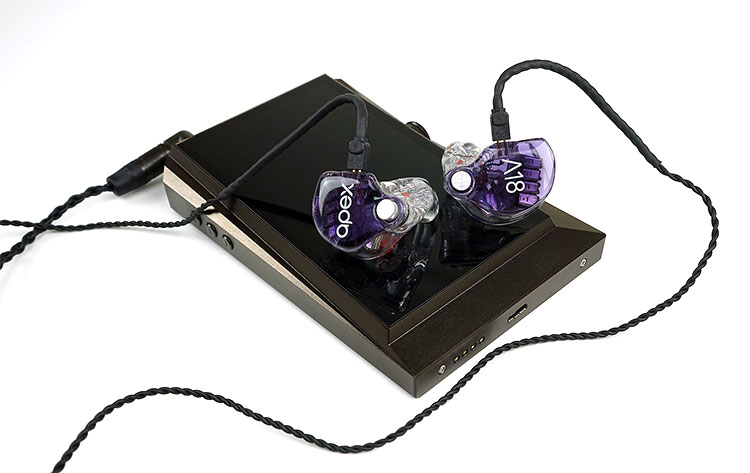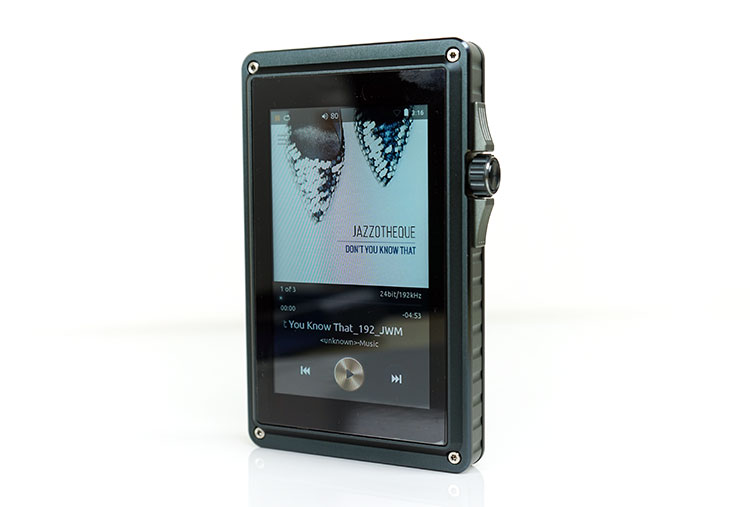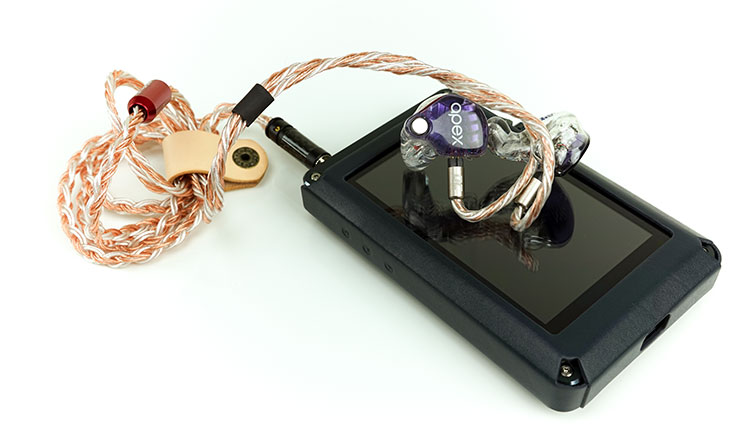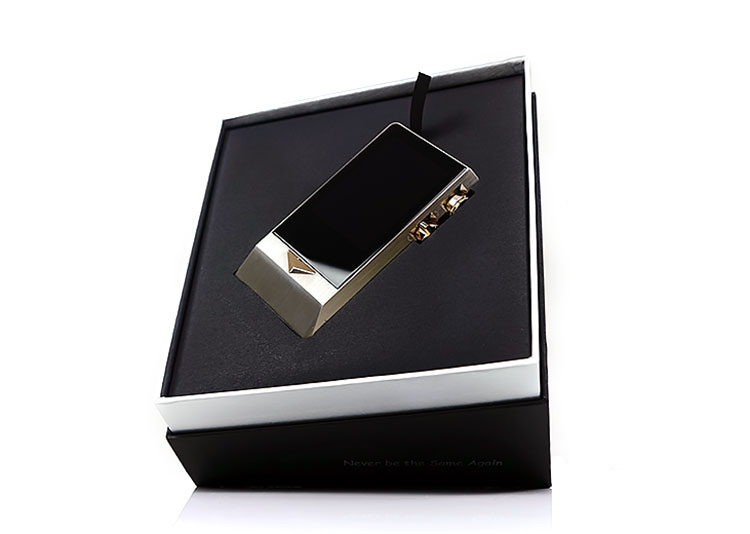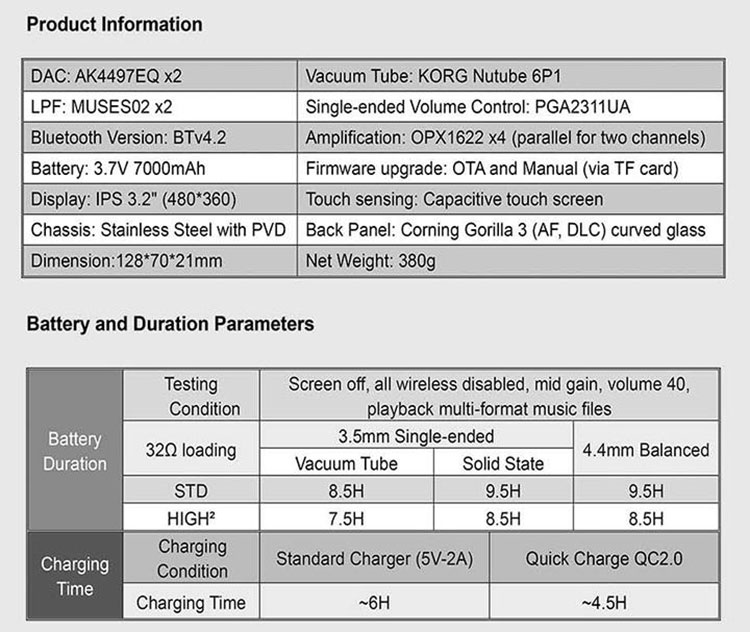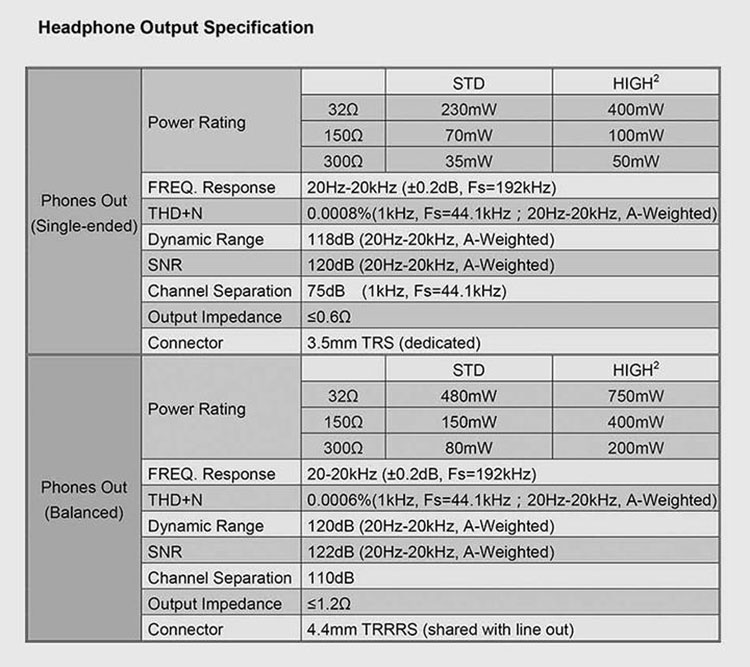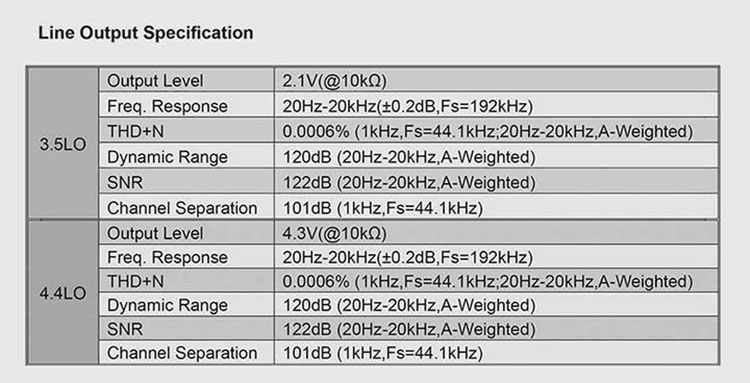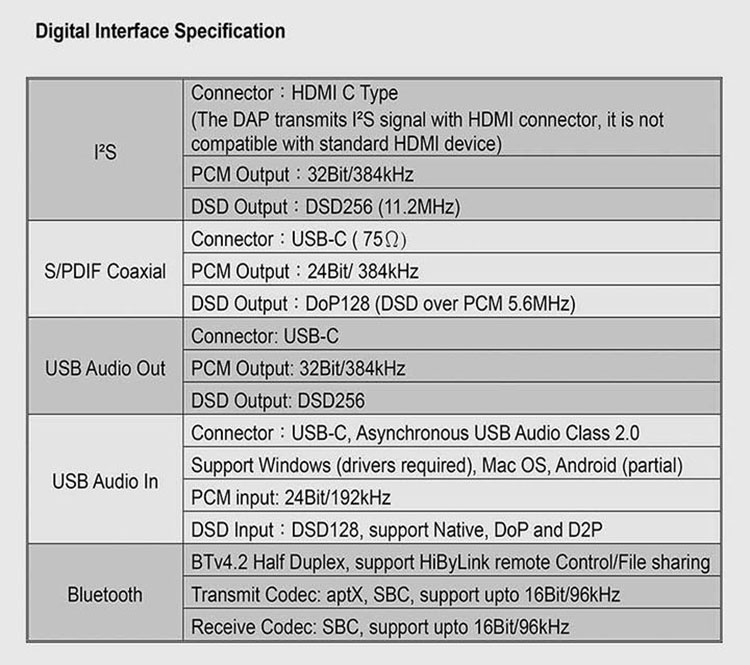Select Comparisons
Sony NW-WM1Z
$3199
Dimensions
The “1Z” is now almost 2 years in the market but for me, still an absolutely competitive offering. People will moan about the weight and at 454g there is a valid point here.
Nothing quite prepares you for the first time someone places it in your hand. The 1Z is heavy at around 75g more than the N8 at that. Both are not lightweight by any stretch of the imagination but the difference between the two is palatable. If you are a man-bag lover it will be more space and the N8 is the slightly larger of the two in dimensions. The 1Z is quite compact for all of its weight.
Screen & UI
The 1Z’s screen is also a handsome fellow and far higher resolution at 854 x 480 (FWVGA) than the IPS 480×320 of the N8. Scrolling is less of a feature on the Sony than the N8. The software between the two is ‘6 of 1, half a dozen of the other’.
Neither is expansive in terms of apps, both offer LDAC, and both offers some element of intensive sound tweaking. The BT performance on the Sony 1Z is better in terms of distance and stability compared to the N8. Decoding capability is quite similar with both stopping at DSD128 and 336BIT/384kHZ PCM.
Battery life on the Sony is colossal compared to the sub-10 hours performance of the N8. If battery life is important to you Sony is miles ahead of everyone else at 16+ hours or more depending on usage. Onboard memory is also double that of the N8 at 256GB compared to 128B with supporting single TF card slots on each. In the N8’s favor, it is OTG capable whereas the 1Z is not.
Amp Variety
The big difference between these two daps is really the quality of the amp output and power. Both the 1Z and N8 have 4.4mm balanced output but the N8 is way ahead in terms of the variety of stage outputs including tube, solid-state, impedance tweaking, SPDIF, and line-out. A few months back the 1Z did acquire USB-DAC features that place it on par with the N8 USB-DAC capability.
There is an argument that the 1Z’s digital amp stage can dual as a line-out but I am personally a lot more comfortable with a traditional line-out performance. The N8 has far more system component potential than the 1Z with its better digital connectivity and cable accessory line-up.
Power
The power on the 1Z is actually not that high which may surprise some. At 16Ω the Sony is capable of just 250mW+250mW balanced and 60mW+60mW unbalanced. Compare that to 200mW into 32Ω unbalanced and up to 750mW balanced on the N8 and clearly, the Cayin DAP has a distinct advantage in terms of output power for demanding headphones.
The Sony will have the blacker background for highly efficient IEMs which may be a preference to some. The lower power rating and digital amp design make it ideal for sub-20Ω IEMs but I am still fairly impressed by how reasonably quiet the N8 is also.
Performance
If you are using the direct source playback option on the 1Z the presentation is little “flatter” in comparison to the more musical presentation of the N8 in solid-state sound mode (unbalanced).
The timbre is relatively smooth on this 1Z mode but the presentation lacks a little in terms of engagement with a very linear sound that really does not emphasize any particular area save for a slightly enhanced mid-bass warmth. The N8 on its solid-state setting is punchier, fuller sounding with far more sub-bass impact emphasis. Staging is also a little more holographic sounding on the N8 compared to the direct sound setting on the Sony 1Z. There is a little more depth and width on the N8 which makes a bit of a difference.
Once you start working the sound settings on the 1Z things change a bit and the gap closes a bit more. The new vinyl DSP brings a slightly more analog tone to the Sony presentation which softens what I think is a fairly digital sounding treble performance on the 1Z.
It is perhaps the one area that the N8 has a big advantage over the 1Z, especially if you switch to the tube output on the N8. I have always found the 1Z top-end to sound a little ‘pushed’ and unnatural to my ear. It tends to creep into vocal timbre now and then producing a harder edge to voicing and percussion timbre on treble sensitive monitors such as the Andromeda or oBravo’s Ra. The N8’s vocal attack and top-end is the more refined and smoother sounding of the two without loss of detail and one I personally recommend for the Andromeda.
Astell & Kern AK380
Sorry, no SP1000 or the latest stuff from AK in the office but we noted that you can still buy the AK380 and it is still one my favorite sounding AK DAPs to this day. If we get an SP1K in we will update this review.
$2,489.00
Design
Going back a year, (2015) on the 1Z, AK launched the AK380. At the time nothing came close in terms of build quality and the tonality won over quite a few high-end fans. For those who didn’t enjoy the cleaner neutral sound of the AK240, the AK380 seemed the perfectly smoother antidote. Priced similarly to the N8 back then, the base model can still be bought but at a fairly premium price.
The AK380 is much smaller than the N8 and weighs in at just 230g making it by far the more pocketable of the two. The screen is also a little bit bigger at 4″ (WVGA) with a higher resolution of 400×800 though I find the N8 to be the brighter of the two screens
Screen
Both have a fairly fluid touchscreen and fairly responsive though I find the N8 the slightly snappier of the two. It doesn’t transition from screen to screen as smoothly as the AK380 but that’s nitpicking, to be honest.
Technical
Decoding on both is quite similar for PCM at 32BIT/384kHz though the AK380 will encode up to DSD256 natively which is a step up on the N8’s DSD128 limit. Though both are dual DAC the AK380 does use an older AK4490 solution which, at the time, was fine but now perhaps a bit aged.
The BT functionality is also a bit behind the N8 with aptX-HD maximum and no LDAC. NO aptX-HD on the N8 but with LDAC that point is moot. WiFi and expansion on the AK380 OS are a little bit better with OTA and TIDAL access on the go.
Connectivity
With regards to connectivity and amplification, the N8 is way ahead of the AK380. Granted you can buy lots of interesting accessories to enable a wider system component feature on the AK380 but at a considerable cost ($600 approx. for the dock). With the N8 these are already in the box and work via the built-in outputs.
You do get an optical out with the AK380, as well as 2.5mm and OTG/USB-DAC capability. However, the edge is with the more modern 4.4mm balanced LO and the USB-C port which can deliver SPDIF, OTG, and USB-DAC capability.
Power
This is once again a major differentiator between the two DAPs. Everyone knows the balanced performance of the AK380 is muted, to say the least. The launch of the AK380 amp addresses that problem but again that is an additional cost with a lower battery life and a much bigger form factor.
On its own, the AK380 unbalanced is around 90mW and 100mW balanced without any load. That will drop once you put any sort of load on it. Granted it provides an incredibly black background but for anything demanding or high-impedance the 200mW – 750mW 32Ω load N8 is going to gobble it up and leave the AK380 behind. That is before we even speak about the trifecta of amp flavorings such as solid-state balanced, tubed unbalanced and SS unbalanced.
Performance
There are a number of differences in the presentation and timbre of these two DAPs that mark the N8 out as the better performer. The first is the dynamic range performance. I find the N8 to have a bit more clarity and impact in the solid-state mode with better low-end body/texture and a more open sounding midrange.
You get a better sense of depth and power with the N8 as well as superior instrumental separation whereas the AK380 just seems marginally the flatter and “shallower” sounding.
The AK380 aims for a similarly smooth delivery but the older AK4490 traits are present in its vocal and lower treble percussion timbre coming off marginally harsher sounding than the richer smoother N8 signature. As a result, the N8 sounds the smoother of the two players to my ear with a richer more forgiving timbre, particularly from the mids upwards.
Switching to the tube output on the N8 softens the low-end and enhances warmth in its timbre. The low-end decay on the N8 will lengthen a little in comparison to the AK380 bass which retains that snappy solid-state flavor. The AK380 will sound the cleaner of the two at this point but it will still deliver that harder vocal and percussion flavor whereas the N8 will sound even lusher and full-bodied in the mids and higher-pitched vocal timbre.
The BIT Opus#2
$1899
Design
The Opus#2 was launched sometime in early 2017 I believe. Certainly, when it was shown at CanJam Singapore 2017 it was very much early days for the Korean flagship DAp from The Bit. Price-wise it has not fared so well dipping closer to the $1k mark for brand new or less depending on the sales period.
The Opus#2 is a much more traditional form factor than any of the compared DAPs but the finishing and materials are high spec’ed and well put together. At 252g it is much lighter than the N8 but in terms of dimensions, it is wider and only marginally shorter. Width is a big difference here with the Opus#2 being much slimmer.
The screen on the Opus#2 is a larger 4″ IPS compared to the 3.2″ of the N8 with a better 480×800 px resolution but the colors are little bland and washed out for me compared to the brighter colors of the smaller N8 screen.
Technical
The OS on the Opus#2 is Android (5.1) but quite heavily skinned in favor of the Opus#2 playback features. It does have Bluetooth but hardly worth mentioning when the highest rate is AD23P compared to the N8’s excellent LDAC capability. The navigation on the Opus#2 is not that great or intuitive though and I do find the N8 HiBy solution far quicker and easier to use.
Both have WiFi but the N8’s just for OTA with no OS expandability. You can OTA on the Opus#2 as well as sideload a few apk Android apps and connect with DLNA for streaming purposes.
Storage on both is the same at 128GB onboard memory with room for additional memory via a single TF card slot each. You can indeed OTG from the Opus#2 for digital audio and memory expansion in the same manner as the N8.
Decoding
Decoding capabilities are on par with the N8 at 32BIT/384kHz for PCM and DSD128 and it also has a dual DAC design. However, this is quite an old chipset, the ES9018K2M. It is still competitive but the dynamic range is not as competitive as the AK4497EQ and the SNR on the Opus#2 is a good 3-5dB lower overall.
Digital outputs include a dual 3.5mm analog unbalanced and optical output port. This port will also switch to line-out but I am unsure if this is a true line-out as the Opus#3 does not have true line-out capability but reports say otherwise that it is indeed a true line-out. There is a further 2.5mm balanced port on the Opus#2. You can also the Opus#2 USB-DAC via the micro-USB port at the base as well as OTG digital audio.
The N8 is the well ahead here for wired I/O with 4.4mm balanced/LO, dedicated 3.5mm line-output, 3.5mm balanced, USB-C DAC/SPDIF (coaxial) as well as OTG digital audio.
Power
The Opus#2 lacks a little bit of “oomph” on its amplification stage at just 105mW unbalanced and balanced at 125mW without any load condition.
Like the AK380 nothing special in terms of output power but it does really well with most low-impedance gear offering low noise and a very nice black background. I think only the Andromeda and phantom picked up tiny amounts of hiss but nothing I would call a deal-breaker. It will struggle with higher impedance headphones and planars that need more power.
The N8 power and variety in its amping outputs make this a special experience way beyond the Opus#2’s capability. With selectable power output for low and high-impedance gear, tube and solid-state sound signatures, and power ratings from 200mW up to 750mW, the N8 is far more flexible with a wider range of headphones. Its line-out voltage is much more flexible for both balanced and 3.5mm regular amp connections.
Performance
Both the N8 and Opus#2 aim for a tonality that is more smooth than aggressive however there are some key differences between these two players. With both set to solid-state and unbalanced out the timbre is a little closer but where the Opus#2 falls behind is the level of engagement it provides.
The dynamic range is not quite as good on the Opus#2 with the result that it sounds a little flat compared to the holographic and snappier sounding solid-state sound of the N8 unbalanced. Details are great on the Opus#2 but rather than surround you it offers them at a distance which does not quite pull you in.
By contrast, the Cayin has a bit more low-end body, a more forward and better textured vocal presence, and a refined and more natural-sounding treble performance. The treble on the Opus#2 is one of the better tuned ES9018K2M performances out there but it still sounds a little digital in comparison to even the SS sound of the N8.
Moving from solid-state to tube and the N8 does get a little lusher, a little more laid back and richer but you still get the same tonal emphasis in key areas such as the low-end body and vocal presence.
Our Verdict
The N8 rightfully takes its chair at the TOTL digital media player table. Not because it is one of the best sounding players out there but simply because they dared to do something different and something that has not been done before in a DAP.
Tube output has always been a dream of mine in a DAP and for some time I thought this might happen in the amp cards from FiiO or iBasso but it never materialized. Not only has Cayin made it happen, but they also did it in a very modern way and delivered something which I think is rather special sounding.
Yet, beyond the tube design, you have so many amplification options with solid-state, balanced, and unbalanced headphone/line-outs that it is hard to see anyone really matching this complexity for some time to come.
Granted Android and wireless streamers might feel a certain level of frustration. The OS is not that expandable, there are no apps and the BT performance is patchy. There are some caveats in there so this may not be the DAP for you if you are worried about things like battery life and TIDAL for long journeys.
It is, however, the TOTL DAP for you if you want something that caters to both monitor, headphone, AND system desktop integration without spending a penny beyond what is already in the box. It is a complete almost HiFi-like vision and the complete source package in that respect.



